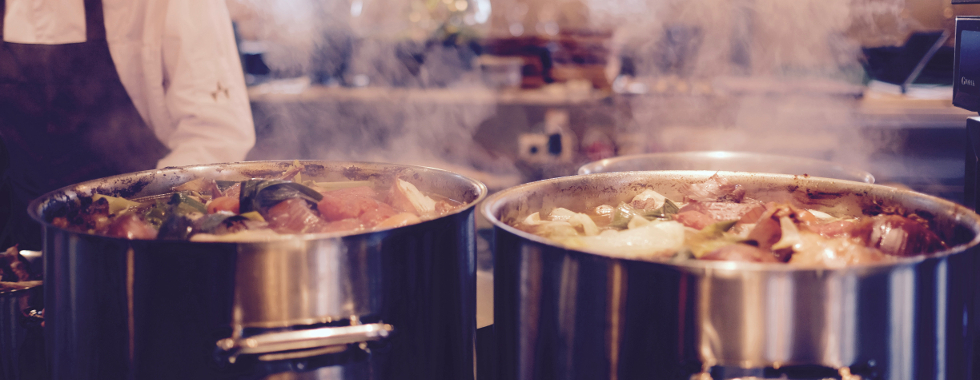Kitchen technology evolves over time and it’s a worthwhile exercise to review the performance and efficiency of your commercial kitchen equipment at least once a year.
Updating your equipment has a number of benefits:
- Reduction in energy bills and C02 emissions
- Reduction in prep and service time (automation)
- Increased food quantities/output
- Improved food quality
Combined, the investment can increase footfall, customer satisfaction, revenue and sustainability into the future. Key equipment to be diligent about include your fridges/freezers, ovens, ware washing machines and ventilation systems.
Look for the following signs and considerations to know when to update your equipment:
Wear and tear
Rust, corrosion, and dents are easily visible signs of wear and tear. They signal that the appliance or piece of equipment has been overuse and potentially not maintained to expected health and safety standards with the correct cleaning products. Read about our maintenance services here.
The best course of action is to replace the rusting or damaged equipment; as more modern versions will probably be more energy efficient (check the Energy Performance Certificate (EPCs) before buying) you will find you save money in the long term.
Reasons to replace specific equipment:
- Fridges/freezers: Produces too much wasted heat, unpredictable temperatures not matching thermostat settings, food spoiling, leaks, build up of ice.
- Ovens: Faulty ignition, inconsistent temperatures, not staying lit (gas).
- Ware washing machines: Noisy, leaks, broken door latch, not properly cleaning dishes.
- Ventilation systems: Damaged filters, rust, dents, inefficient circulation.
Additionally, you wouldn’t want customers to see worn and outdated equipment in use, and if it isn’t to code, you may be temporarily or permanently shut down by health inspectors.
Breakdown
If your machines are a few years old and have broken down in the past, and continue to do so, it may be costing you more to keep them running than if you upgraded. Breakdowns result in a loss of business while you organise repairs, as well as additional costs to fix them that you may or may not have budgeted for.
It’s especially prudent to replace your machines with these issues if they are out of warranty.
Wasted energy
White goods and kitchen equipment by their nature use a lot of energy, incorporating electricity and gas for heating, cooling and a range of desired outputs. Older machines that are damaged or just simply outdated will use more energy than their modern counterparts, which are designed to be more energy efficient.
As said, check the EPCs for all new equipment to ensure your new catering equipment will improve your overall energy efficiency and as a result, save you money on your utility bills.
Considering a relaunch?
A perfect time to review and replace your outdated equipment would be for a brand relaunch. It will showcase your establishment as modern, fresh and something new to try, even though you’re already established. If you host a PR dinner for local journalists and critics, make a point of discussing the improvements in your equipment and how diners will benefit.
You can either refurbish your entire kitchen or update equipment one at a time in degree of urgency. It’s important to consider all aspects of running a successful kitchen when you look for replacements, and the aim should always be to make an improvement on what you currently have.
Contact Indigo Catering Equipment
Our experienced and dedicated team offer professional commercial catering equipment reviews and can source the best new equipment for your business and needs. We work with leading brands and have a focus on environmentally friendly processes that will also save you money on energy bills.
Call us on 01323 843447 or email sales@indigoce.co.uk. We work across the London and the South East, including Brighton, Kent, Sussex and Surrey.


